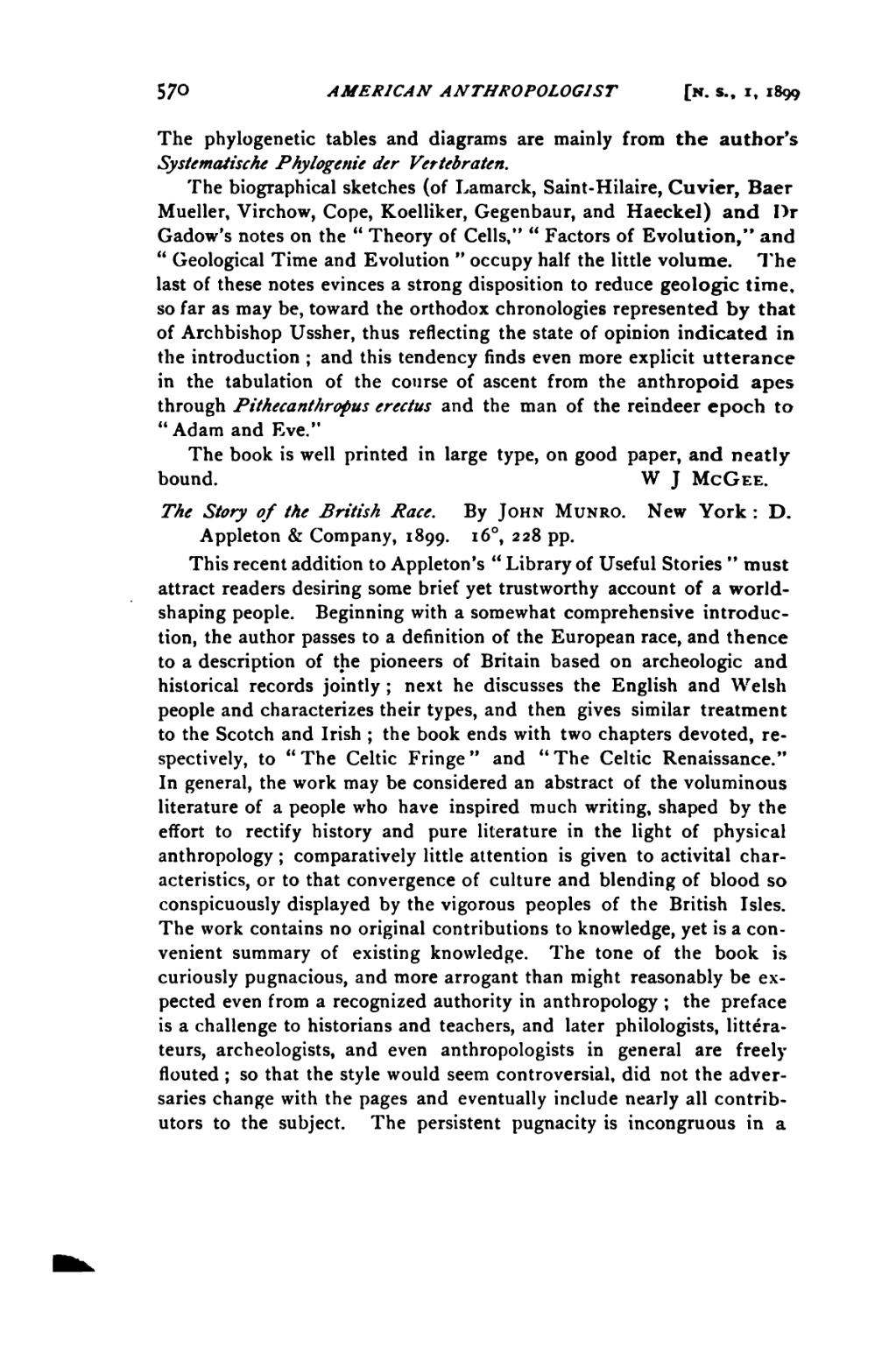57° AMERICAN ANTHROPOLOGIST [n. s., i, 1899
The phylogenetic tables and diagrams are mainly from the author's Systematise he Phylogenie der Vertcbraten.
The biographical sketches (of Lamarck, Saint-Hilaire, Cuvier, Baer Mueller, Virchow, Cope, Koelliker, Gegenbaur, and Haeckel) and Pr Gadow's notes on the " Theory of Cells," " Factors of Evolution," and " Geological Time and Evolution " occupy half the little volume. The last of these notes evinces a strong disposition to reduce geologic time, so far as may be, toward the orthodox chronologies represented by that of Archbishop Ussher, thus reflecting the state of opinion indicated in the introduction ; and this tendency finds even more explicit utterance in the tabulation of the course of ascent from the anthropoid apes through Pithecanthropus erectus and the man of the reindeer epoch to "Adam and Eve."
The book is well printed in large type, on good paper, and neatly bound. W J McGee.
The Story of the British Race. By John Munro. New York : D. Appleton & Company, 1899. 16 , 228 pp.
This recent addition to Appleton's " Library of Useful Stories " must attract readers desiring some brief yet trustworthy account of a world- shaping people. Beginning with a somewhat comprehensive introduc- tion, the author passes to a definition of the European race, and thence to a description of the pioneers of Britain based on archeologic and historical records jointly ; next he discusses the English and Welsh people and characterizes their types, and then gives similar treatment to the Scotch and Irish ; the book ends with two chapters devoted, re- spectively, to " The Celtic Fringe " and " The Celtic Renaissance." In general, the work may be considered an abstract of the voluminous literature of a people who have inspired much writing, shaped by the effort to rectify history and pure literature in the light of physical anthropology ; comparatively little attention is given to activital char- acteristics, or to that convergence of culture and blending of blood so conspicuously displayed by the vigorous peoples of the British Isles. The work contains no original contributions to knowledge, yet is a con- venient summary of existing knowledge. The tone of the book is curiously pugnacious, and more arrogant than might reasonably be ex- pected even from a recognized authority in anthropology ; the preface is a challenge to historians and teachers, and later philologists, littera- teurs, archeologists, and even anthropologists in general are freely flouted ; so that the style would seem controversial, did not the adver- saries change with the pages and eventually include nearly all contrib- utors to the subject. The persistent pugnacity is incongruous in a
�� �
